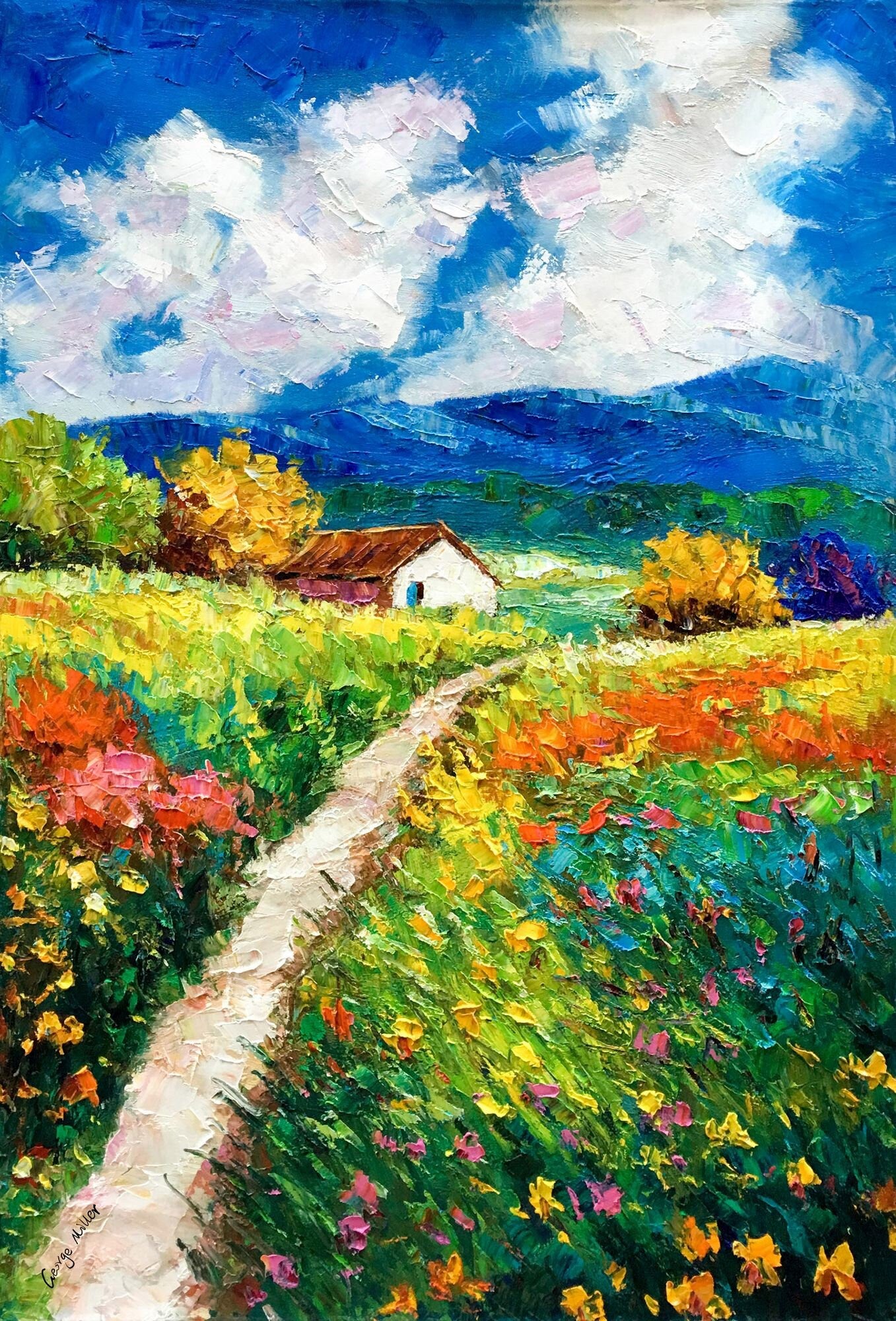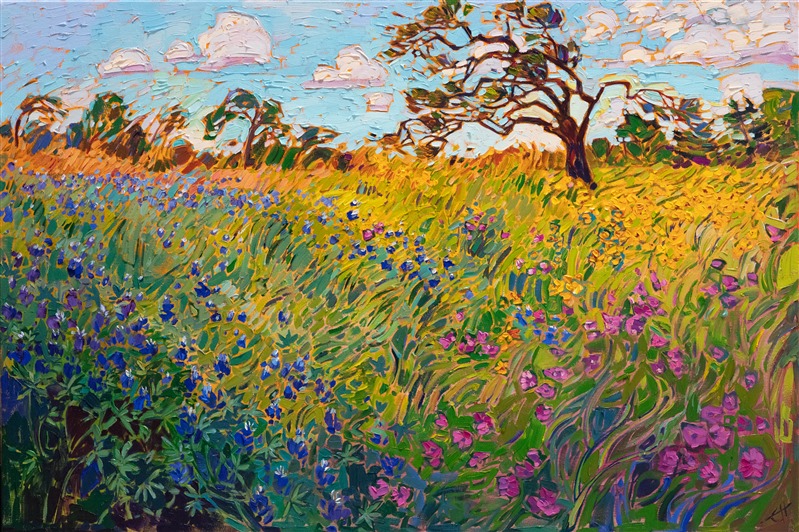Exploring Everything About Oil Paintings: A Guide to Comprehending Their Elegance and Value
Oil paintings have actually mesmerized audiences for centuries, supplying a glimpse into the imaginative mastery of various eras. Their rich background is linked with ingenious methods and profound psychological expression. Understanding the materials and methods behind these art work can boost gratitude. In addition, the marketplace for oil paintings provides possibilities for financiers and enthusiasts alike. As one discovers this interesting globe, the question develops: what makes an oil painting genuinely beneficial?
The Background of Oil Paint: A Journey With Time
Although oil painting has roots that go back to old times, it absolutely thrived throughout the Renaissance, when musicians uncovered its convenience and abundant shade potential. Early examples can be traced to the 7th century, with methods progressing especially across societies. The medium came to be famous in Northern Europe in the 15th century, particularly via the works of artists like Jan van Eyck, that pioneered its usage for comprehensive realistic look and dynamic colors. This period marked a separation from tempera paints, allowing for higher depth and appearance. As oil paint spread, it influenced many musicians, resulting in work of arts by renowned figures such as Leonardo da Vinci and Rembrandt. The medium's legacy continues, forming the art globe well right into contemporary times.
Understanding Oil Repaints: Materials and Techniques
As artists check out the world of oil paints, they come across a varied array of products and strategies that specify this tool. The primary components of oil paint consist of pigments, which provide color, and drying out oils, such as linseed, that bind the pigments and facilitate application. Numerous ingredients can change the paint's appearance and drying out time, improving versatility. Techniques like glazing, where clear layers are developed, and impasto, which includes using thick paint, enable for various aesthetic impacts. In addition, the usage of brushes, scheme blades, and also fingers can create distinct appearances and coatings. Recognizing these products and strategies allows artists to totally share their creative thinking and attain the wanted influence in their art work.
The Function of Color in Oil Paintings
Color plays a critical role in oil paints, influencing both aesthetic charm and emotional vibration. Comprehending shade theory essentials, consisting of the relationships in between shades, can enhance a musician's ability to share mood and environment. Furthermore, understanding shade mixing strategies permits for greater deepness and richness in a paint's combination.

Shade Concept Essential
Recognizing shade theory is vital for musicians dealing with oil paints, as it develops the foundation for creating harmonious and aesthetically appealing make-ups. Color theory encompasses the study of just how shades engage, the color wheel, and the relationships in between main, second, and tertiary colors. Musicians utilize complementary colors to improve contrasts and create focal factors, while analogous colors advertise unity and cohesiveness within a piece. Additionally, the concepts of cozy and great shades influence the assumption of depth and space in a paint. Comprehending these concepts allows musicians to manipulate shade efficiently, assisting the viewer's eye and connecting their intended message. Mastery of shade concept inevitably improves an artist's capacity to convey feelings and concepts through their work.
Psychological Influence of Color
The emotional influence of shade in oil paintings plays an essential duty in how audiences connect and perceive with artwork. Shades evoke certain sensations and moods, influencing the audience's emotion. Cozy tones like oranges and reds can develop a feeling of warmth and energy, while awesome tones such as blues and eco-friendlies commonly stimulate peace or self-questioning. Artists tactically choose shade schemes to enhance narrative elements, assisting the target market's emotional journey. The saturation and comparison of colors even more intensify these results, attracting focus and producing emphasis. Eventually, the interplay of colors in oil paints not only improves their aesthetic appeal yet additionally offers as an effective tool for psychological expression, improving the audience's experience and analysis.
Shade Combining Techniques
While lots of elements of oil paint add to the general structure, grasping color mixing methods is essential for accomplishing desired effects and depth. Color blending can be come close to via numerous approaches, consisting of the subtractive and additive procedures. Additive blending includes integrating colors of light, while subtractive mixing depends on pigments, where colors mix to develop new shades. Artists often make use of a minimal palette to create harmonious works, understanding the relationships in between main, additional, and tertiary colors. Strategies such as glazing and scumbling better improve deepness and luminance. By skillfully blending shades, an artist can stimulate emotions, create focal factors, and achieve a feeling of realism, inevitably boosting the paint's emotional and aesthetic influence.
Famous Oil Painters and Their Iconic Works

Famed for their mastery of color and technique, oil painters have produced a few of one of the most popular art work in background. Renowned artists like Vincent van Gogh captivated audiences with his emotive brushwork in "Starry Night," while Claude Monet's "Impression, Dawn" laid the foundation for Impressionism. Leonardo da Vinci's "Mona Lisa" stays an enduring symbol of imaginative wizard, showcasing his ability in recording human expression. Rembrandt's "The Evening Watch" shows his ingenious use of light and shadow. Other notable figures consist of Pablo Picasso, that changed modern-day art with his strong testing in works like "Les Demoiselles d'Avignon," and Georgia O'Keeffe, whose dynamic depictions of landscapes and blossoms assisted define American modernism. Each musician's unique design added considerably to the oil painting landscape.
How to Evaluate the Top Quality of an Oil Paint
Assessing the quality of an oil paint includes a cautious assessment of craftsmanship strategies, in addition to an analysis of shade and structure. Observing brushwork, layering, and the application of paint can reveal the musician's skill degree. Furthermore, the interplay of shades and the general setup of components contribute substantially to the paint's check here aesthetic worth.
Evaluating Workmanship Methods
A meticulous evaluation of craftsmanship methods is necessary for figuring out the high quality of an oil paint. Evaluators need to first check out the application of paint; thick, textured brushstrokes might recommend a proficient hand, while excessively uniform applications can show an absence of depth. oil paintings for sale. The layering strategy is likewise important; the visibility of lusters and varied density can improve luminosity and intricacy. Furthermore, the top quality of the materials utilized, such as the canvas and pigments, plays a significant role in resilience and total aesthetic. Interest to information in elements like edges and changes in between colors shows the musician's dedication to their craft. Eventually, these strategies contribute to the paint's psychological effect and market price, acting as indications of the artist's ability and intent
Evaluating Color and Structure
While assessing the high quality of an oil painting, one should concentrate on the interplay of shade and make-up, as these aspects are essential to the artwork's general impact. Shade options can develop and evoke emotions state of mind; for that reason, the musician's palette must be examined for harmony and comparison. A healthy make-up routes the viewer's eye and creates a feeling of unity. Musicians often employ techniques like the rule of thirds or leading lines to enhance visual rate of interest. Additionally, using light and darkness can include deepness, boosting the three-dimensionality of the painting. Eventually, a successful oil painting marries color and composition, involving the visitor and welcoming a much deeper recognition of the artist's vision and method.
Caring for and Preserving Oil Paintings
Proper treatment and conservation of oil paints is necessary for preserving their stability and longevity. To protect these art work, it is crucial to show them away from straight sunlight, which can cause fading and staining. Keeping a steady environment with regulated temperature and humidity more aids in avoiding damage. Cleansing must be done gently making use of a soft, dry towel, staying clear of any type of harsh chemicals that can harm the paint or varnish. Normal assessments for signs of deterioration, such as fracturing or flaking, are advisable. When transporting or keeping oil paintings, correct cushioning and framework are required to stay clear of physical damage. Inevitably, persistent treatment adds to the visual appeal and value of oil paints gradually.
The Marketplace for Oil Paintings: Investing and collecting
Recognizing the marketplace dynamics for oil paints is necessary for collection agencies and capitalists alike. The value of these art work is influenced by numerous aspects, including the musician's credibility, historic relevance, and current patterns. Collectors commonly seek items that resonate directly while considering possible gratitude in worth. Auctions and galleries act as key venues for trading, with costs fluctuating based upon need and rarity. Investing in oil paints calls for study into the marketplace, as well as an understanding of authenticity and provenance. In addition, emerging musicians might use possibilities for significant returns, while developed names can regulate high prices. Generally, a strategic technique to accumulating can yield both aesthetic satisfaction and financial rewards.

Frequently Asked Questions
What Are the Environmental Impacts of Oil Painting Materials?
The ecological influences of oil paint materials include the release of unpredictable natural substances (VOCs), harmful waste generation, and resource removal for pigments. These variables contribute to contamination and eco-friendly degradation, raising problems among ecologically aware artists and customers.
Exactly How Do Various Canvases Influence Oil Paint Results?
Different canvases influence oil painting results substantially. Absorbency, surface area, and appearance quality can alter paint application, drying times, and shade vibrancy. Musicians frequently choose specific canvases to attain wanted results and improve their creative expression.
Can Oil Paintings Be Restored if Damaged?
If damaged, Oil paints can undoubtedly be brought back. Expert conservators utilize numerous strategies to repair tears, tidy surface areas, and address discoloration, ensuring that the art work maintains its original beauty and worth for future generations.
What Are the Indications of an Original Oil Paint?
The indications of an original oil paint include noticeable brush strokes, structure variations, and an irregular canvas weave (oil paintings for sale). In addition, authenticity may be validated with provenance, trademarks, and the existence of a varnish layer unique to oil tools
How Has Modern Technology Influenced Modern Oil Painting Techniques?
Technology has actually significantly affected modern-day oil painting strategies by introducing electronic tools for preparation, enhanced products for texture and durability, and online platforms for sharing and selling art, thereby expanding musicians' imaginative opportunities and audience reach. Oil paint has origins that date back to ancient times, it really flourished throughout the Renaissance, when musicians found its flexibility and rich shade potential. The psychological influence of shade in oil paintings plays an important role in just how customers attach and view with artwork. While many facets of oil painting contribute to the total structure, mastering shade mixing strategies is necessary for accomplishing desired results and depth. Evaluating the top quality of an oil painting entails a cautious assessment of workmanship techniques, as well as an evaluation of color and make-up. While examining the quality of an oil paint, one should concentrate on the interplay of shade and composition, as these components are fundamental to the art work's overall influence.